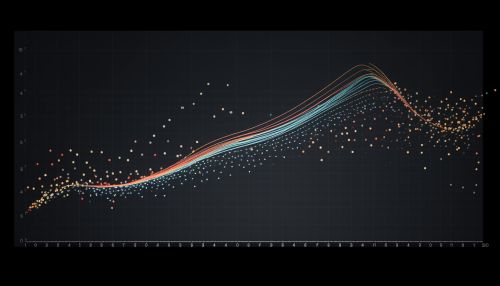Regression Analysis
Introduction
Regression analysis is a statistical process for estimating the relationships among variables. It includes many techniques for modeling and analyzing several variables, when the focus is on the relationship between a dependent variable and one or more independent variables (or 'predictors'). The most common form of regression analysis is linear regression, which seeks to model the relationship between two variables by fitting a linear equation to observed data.
Types of Regression Analysis
There are several types of regression analysis, each with its own specific use and interpretation. Here are some of the most commonly used types:
Simple Linear Regression
Simple linear regression is a statistical method that allows us to summarize and study relationships between two continuous (quantitative) variables. This method assumes the relationship between the two variables is linear.
Multiple Linear Regression
Multiple linear regression analysis is simply a more complex form of linear regression, which uses two or more independent variables to predict a dependent variable.
Logistic Regression
Logistic regression is used when the dependent variable is binary in nature. In other words, the output or outcome is either one thing or another.
Polynomial Regression
Polynomial regression is a form of regression analysis in which the relationship between the independent variable x and the dependent variable y is modeled as an nth degree polynomial.
Ridge Regression
Ridge regression is a method used to analyze multiple regression data that suffer from multicollinearity.
Lasso Regression
Lasso regression is a type of linear regression that uses shrinkage. This method is particularly useful when dealing with high-dimensional data.
ElasticNet Regression
ElasticNet regression is a regularized regression method that linearly combines the L1 and L2 penalties of the lasso and ridge methods.
Assumptions of Regression Analysis
There are several assumptions that are made when performing regression analysis. These include:
1. Linearity: The relationship between the independent and dependent variables is linear. 2. Independence: The residuals are independent. In particular, there is no correlation between consecutive residuals in time series data. 3. Homoscedasticity: The residuals have constant variance at every level of x. 4. Normality: The residuals of the model are normally distributed.
Applications of Regression Analysis
Regression analysis is widely used for prediction and forecasting, where its use has substantial overlap with the field of machine learning. Regression analysis is also used to understand which among the independent variables are related to the dependent variable, and to explore the forms of these relationships.
Limitations and Misuse of Regression Analysis
Regression analysis may be misused in several ways. For example, it can be improperly used to infer a causal relationship where none exists, or it can be used with data that does not meet the assumptions of the regression model.
See Also
Statistical Modeling, Data Analysis, Predictive Modeling


